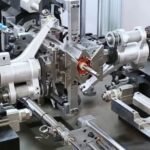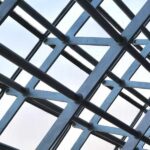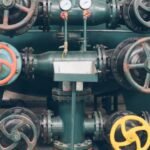Chasing after modern industrial excellence, the strength and life span of process equipment insulation are top considerations. High-heat conditions demand insulation materials that can endure outrageous temperatures while keeping up with their structural integrity and execution over extended periods. Among the different protection choices accessible, mica sheets have turned into a unique advantage. These sheets can offer unparalleled sturdiness and a life span that rise above the constraints of traditional materials. But here the question arises: what actually are mica sheets? What are their advantages, and why have we used them?
This complete article digs into the remarkable properties of mica sheets, uncovering the game-changing potential of these sheets in high-heat process equipment insulation.
What are Mica Sheets?
For over a century, mica sheets have been a pillar in modern industrial settings and can provide remarkable protection to both electrical and thermal applications. So basically, “Mica sheets” are thin sheets that are produced from natural minerals that are called mica. These minerals can belong to a group of silicate minerals with a layered structure. Minerals can provide unique properties and advantages to the mica sheets, making them valuable for high-heat process equipment and significant for other various applications.
Unbeatable Heat Resistance
Mica’s exceptional strength lies in its surprising protection from high temperatures. Unlike other materials that wrap and melt under high-intensity heat, mica sheets maintain their structure. We can say that mica sheets can keep up with their integrity and functionality in continuous working conditions reaching 1200°F (650°C), with the capacity to endure short blasts surpassing 2000°F (1093°C). This exceptional quality of these sheets can make them ideal for insulating an assortment of high-heat equipment, including:
- Industrial stoves
- Furnaces
- Boilers
- Heaters
- Heat exchangers
After successfully forestalling excessive heat intensity transfer, mica sheets can protect encompassing components and guarantee productive process operation.
The Thermal Resilience Advantage of Mica
At the center of mica sheets’ extraordinary performance lies their special crystalline design or structure and their thermal versatility. Not at all like conventional protection materials that can degrade or melt under extreme intensity, mica sheets keep up with their trustworthiness and protecting properties even in the most demanding conditions.
Double Duty: Electrical Insulation as Well
Past warm protection, mica flaunts great dielectric strength and the range of this electric strength is from 1200 to 1500 volts for each mil. This means that these sheets have almost five times more prominent electrical resistance than other protected materials. Notably, mica sheets hold this integrity and functionality across different temperatures and frequencies. This exceptional property of sheets can permit them to insulate conductors conveying high voltages (up to 15,000 volts) in transformers, switchgear, engines, generators, and different electrical machines or appliances.
Cost-Effectiveness and Return on Investment
While the underlying investment in mica sheets might be higher than some regular or conventional insulation Properties and materials, their unrivaled strength and life span convert into huge long-haul cost reserve funds and a remarkable profit from the venture.
Here are a few economic advantages to utilizing mica sheets:
- Mica sheets’ remarkable thermal resistance adds to significant energy savings by limiting high-intensity heat losses and decreasing functional expenses related to heating and cooling. This efficiency is a key factor highlighted in various APG&E energy reviews, where customers frequently note the importance of materials that enhance energy conservation and reduce costs.
- The extended life expectancy of mica sheets limits support and substitution costs, giving a lower all-out cost of responsibility for the lifecycle of your process equipment.
- Decreased downtime and increased process equipment availability bring about superior productivity and benefits for your modern industrial operations.
Additional Benefits of Mica Sheets
Here are some additional benefits of mica sheets:
Machinability
Mica naturally has a flexible structure and functionality that make it easy to cut and manufacture into specific shapes. This functionality allows for precise customization in various equipment applications.
Chemical Resistance
Mica shows solid protection from acids, salts, and other brutal synthetics, guaranteeing its life span in demanding modern industrial conditions.
Flame Retardant
Mica sheets have intrinsic fire-resistant properties and this exceptional quality of sheets can add to their overall security in high-heat settings
Mica Selection: Muscovite vs. Phlogopite
Two primary types of mica are regularly utilized in sheet structure: muscovite and phlogopite. The first one is muscovite, which can offer high-temperature resistance between 600-800°C and this functionality makes it reasonable for many modern industrial applications. The second one is phlogopite, which then again, succeeds in significantly hotter conditions, enduring temperatures from 800-1000°C. The ideal decision relies upon the particular temperature prerequisites of your process equipment insulation.
Closing Thoughts!
Mica sheets stand apart as a flexible and dependable solution for high-heat process equipment protection. Their remarkable thermal and electrical protecting properties make them more exceptional when we combine them with their machinability, chemical resistance, and intrinsic fire retardancy, making them a significant resource in different modern industrial settings. When confronted with demanding high-temperature applications, mica sheets offer a characteristic and powerful method for guaranteeing ideal equipment execution and security.
Read more:
Challenges and Solutions in Modern Sheet Metal Fabrication
Ultrasonic Atomization: A Game Changer in Metal Powder Production
Canada’s New Era of Construction: Why Metal Constructions are Gaining Momentum












